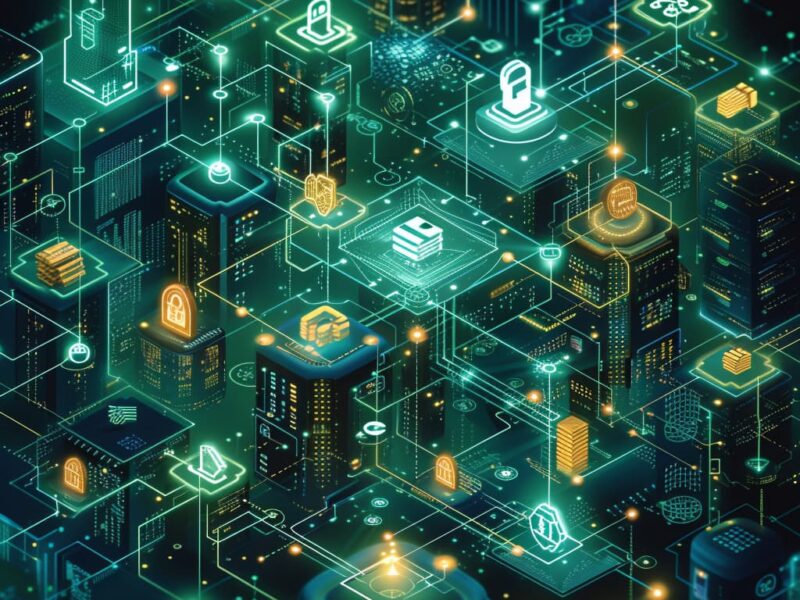The secure and revolutionary technology of BLOCKCHAIN has already aroused the interests of gigantic institutions, such as Bank of America, Sandander, Banco Central do Brasil and others. Understand how this powerful security system works!
Recently the world went through the Bitcoin fever , whose overvaluation raised the search for cryptocurrencies and the billing of exchange houses .
Quickly, those who already knew about Bitcoin but had not invested yet tried to make up for lost time; those who didn’t know, started researching and trying to invest.
This increase in people’s interest in investing in cryptocurrencies, especially Bitcoin, has also increased the number of problems and complaints regarding transaction agencies.
The number of Bitcoin investors surpassed that of B3 investors , the São Paulo stock exchange , and also exceeded the sum of all active Treasury Direct investors , according to information from G1 .
Although investing in cryptocurrencies is not recommended by the Central Bank of Brazil , which suggests risks of a financial bubble , the growth of exchanges, which provide access to about 95% of transactions made with cryptocurrencies, was very expressive in 2017, the year where Bitcoin was worth nearly $20,000 .
Among the great advantages of cryptocurrencies is the possibility of making large transfers of values between countries, for example, without taxation , unlike what happens with banks, which charge fees – generally considered high – in all their operations.

How does Bitcoin work?
For the vast majority of people, cryptocurrencies are a recent and complex subject, which still raises suspicion and fear.
For those who understand a little more about the subject, however, despite the devaluation that Bitcoin suffered after the 2017 boom , it is still the currency of the future .
Bitcoin is the most famous of cryptocurrencies, theoretically created by the mysterious developer Satoshi Nakamoto , who uses this name to protect his true identity.
Cryptocurrencies are currencies, in fact, used in real financial transactions .
They do not exist in physical form, are completely virtual and allow users to transmit digital properties to other users using an internet -connected network .
In addition, another major difference between traditional currencies, such as the real or the dollar, for example, and cryptocurrencies is that the issuance of these is not controlled by a Central Bank , such as the Central Bank of Brazil.
Cryptocurrencies are produced in a decentralized way by thousands and thousands of computers.
The process of generating a Bitcoin is called mining and is done by connected machines that work to solve mathematical problems on the network.
When a machine solves one of these problems, it earns a fraction of bitcoin for its work.
For example: you need to transfer a sum of money to someone and for this you will use Bitcoin. The entire transaction made for the amount to leave your account and arrive at the destination account is done through the network of connected computers, machines that work to perform tasks and receive Bitcoin fractions as payment for this.
The idea of Bitcoin was disseminated by its creator in a forum of activists who saw in cryptography opportunities for political and social change, which was only possible thanks to the development of Blockchain technology.
For many people, Bitcoin shakes up the traditional business model, which involves a central – the bank, accountants and traditional payment systems .
This idea already gives rise to a transformation in the traditional model equivalent to those caused by Uber in relation to taxis or by Amazon in relation to traditional bookstores, for example.
What does Blockchain have to do with the security of Bitcoin transactions?
Traditional currencies are issued and controlled by banks with centralized systems , such as Caixa Econômica Federal , for example: all information about customers, their accounts, transactions and other data are held by the bank and protected by it.
The bank’s security system is responsible for ensuring the veracity of financial transactions , for keeping records of all of them, for solving customer problems.
In this way, the veracity of everything done through a bank depends on the records made by this centralized network, whose sole responsibility is the bank itself .
Cryptocurrencies work completely differently: their system is not centralized, it is distributed .
In the image below, observe the diagrams that exemplify a centralized system, such as those of banks, and Blockchain technology, a decentralized system in which several points connect to each other instead of connecting to a central, respectively:
In distributed systems, there is not a single person responsible for all data and transactions, but a network of connected machines that work solving mathematical problems and enabling transactions to take place.
In this distributed or decentralized network , all financial transactions involving Bitcoins are made, so that responsibility for the data is not in the possession of a single controller but shared among the network.
Although there are still divergent opinions on the use of cryptocurrencies, its security system is extremely intelligent and is already seen positively by several institutions , even the Central Bank of Brazil itself.
This is the much talked about Blockchain , which, in free translation, would be a chain of blocks, or chain of blocks .
What is Blockchain?
Blockchain is a distributed database system that became popular for supporting cryptocurrencies such as Bitcoin and has great growth potential, being listed as one of the professions of the future.
Regarding cryptocurrencies, Blockchain is what makes their existence and functioning possible , ensuring the veracity of transactions and preventing fraud.
Due to its structure that is extremely difficult to circumvent, Blockchain technology ensures transparency and immutability in financial transactions , which are always recorded and cannot be altered, so that its use can be strategic for numerous types of institutions, such as Audit companies , for example.
In fact, Blockchain is currently very closely associated with Bitcoin, but this is just the tip of the iceberg : for many scholars, Blockchain has the potential to transform a large number of industries , which can range from areas such as politics to healthcare.
But how exactly does this Blockchain thing work?
Although this technology is complex, its basic idea is easy to understand: it is a database in which all activities are validated by users instead of being validated by a central authority, as in the case of banks.
Machines connected to the network supervise and keep records of data made by other users. Data that, in the case of banks, are stored on a particular server or on several servers.



